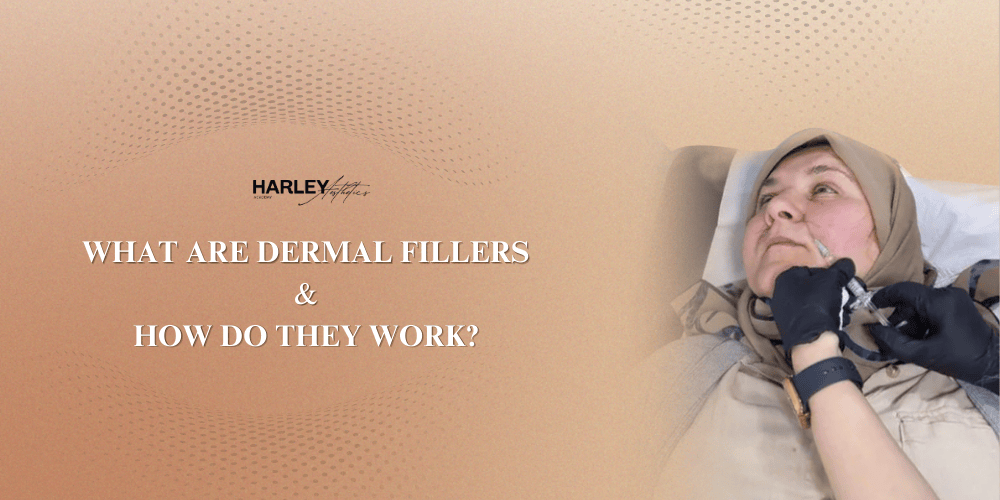June 2025 Sale – 40% Off Get Offers

With the rising popularity of non-surgical cosmetic procedures in the UK, it’s no surprise that dermal fillers have become a topic of interest among both beauty enthusiasts and those looking to break into the aesthetics industry. Whether you’re curious about enhancing your own appearance or exploring new career opportunities, understanding what dermal fillers are and how they work is a great place to start.
In recent years, especially with the implementation of new licensing requirements for Injectables and filler treatments in the UK, the industry has seen a shift toward more regulated and professional standards. This change presents both an opportunity and a responsibility – one that starts with knowledge.
In this guide, we’ll explore:
Whether you’re researching for personal use or considering a future in aesthetics, this blog is your comprehensive guide to dermal fillers in the UK.
Dermal fillers are soft, gel-like substances injected into the skin to restore lost volume, smooth lines, and enhance facial contours. They are commonly used in areas such as the cheeks, lips, jawline, and under the eyes.
The most widely used fillers today are made from hyaluronic acid (HA), a naturally occurring substance found in the body that retains moisture and adds plumpness to the skin. Because it’s a biocompatible material, the body generally tolerates it well, and results can be reversed if necessary – a feature many patients find reassuring.
Dermal fillers work by adding volume beneath the skin. As we age, our bodies produce less collagen, elastin, and hyaluronic acid three key components responsible for keeping the skin firm, hydrated, and youthful. The depletion of these elements leads to sagging, fine lines, and hollow areas.
When injected with precision, dermal fillers:
For example:
The effects are visible almost immediately, and depending on the product used, results can last between 6 to 18 months.
Generally speaking, yes. When administered by a trained professional. As with any injectable treatment, safety largely depends on the injector’s knowledge, technique, and understanding of facial anatomy.
Here’s what makes filler treatment safer:
Unfortunately, due to the previous lack of regulation in the UK, a number of unqualified providers have offered treatments without appropriate training. Thankfully, new legislation for aesthetic practitioners is beginning to clamp down on this practice to prioritise public safety.
For anyone considering a career in this field, undertaking proper aesthetic courses is now more important than ever. These courses cover the science, technique, and safety protocols required to deliver treatments ethically and effectively.
Most dermal filler appointments begin with a consultation, where the practitioner discusses the client’s goals, examines facial structure, and explains possible outcomes.
Here’s a general breakdown of what to expect:
The procedure typically takes 30–60 minutes, with minimal downtime. Minor swelling, redness, or bruising may occur but usually resolves in a few days.
Like any procedure, dermal fillers come with potential side effects, though most are mild and temporary. These include:
Rare but serious complications can include:
These risks highlight the importance of seeking treatment from a qualified practitioner, someone who has not only passed aesthetic courses but understands how to manage complications.
In 2024, the UK government confirmed that licensing requirements for Injectables and filler treatments would be introduced to regulate the aesthetics industry more thoroughly. These rules aim to ensure that:
The government is also exploring minimum standards for aesthetic courses, meaning future practitioners will need formal qualifications from approved training providers.
This change is a massive step towards protecting the public and enhancing the professionalism of the aesthetics industry. It also makes it the perfect time to get qualified if you’re considering aesthetics as a career.
If you’re considering entering the field, make sure you choose a CPD-accredited aesthetic course to ensure you meet future licensing standards.
Previously, the UK had relatively open access to aesthetic training, with both medics and non-medics enrolling in injectable courses. While that’s still possible, the legal framework is shifting. Future regulations may limit who can practise, or at least require a recognised qualification and license.
Whether you’re a beauty therapist, nurse, or career changer, the best way to prepare is to start with accredited aesthetic courses. These typically begin with a Foundation level in Injectables and Fillers, then progress to Advanced or Masterclass levels.
Courses often include:
Dermal fillers can benefit people of all ages and genders. While most clients are aged 25–55, some choose to start earlier for preventative reasons, or later to restore volume lost with age.
Typical reasons clients seek fillers:
If you’re interested in the field not as a client, but as a future provider, now is an ideal time to explore aesthetic courses that offer in-depth training in these procedures.
With growing demand and tightening regulations, the aesthetics industry in the UK is undergoing a transformation. Clients are savvier, legislation is evolving, and the bar for safety and professionalism is being raised.
Whether you’re exploring treatments or thinking of launching a career in this field, education is key. Understanding the science behind dermal fillers, knowing what to expect, and keeping up with the latest legal updates will help you make informed, confident decisions.
Dermal fillers are more than just a beauty trend, they’re a blend of science, skill, and artistry. When performed properly, they can enhance features naturally and restore confidence.
If you’re curious about treatments, always consult with a trained, insured, and licensed practitioner. If you’re thinking about entering the industry, make sure you invest in a trusted, structured, and regulated education, because future legislation will demand it.
Accredited aesthetic courses are not only the gateway to becoming a safe, knowledgeable injector but also a stepping stone to a rewarding career in a rapidly expanding industry.
© Harley Aesthetics Copyright 2025. All Rights Reserved.
Social Chat is free, download and try it now here!